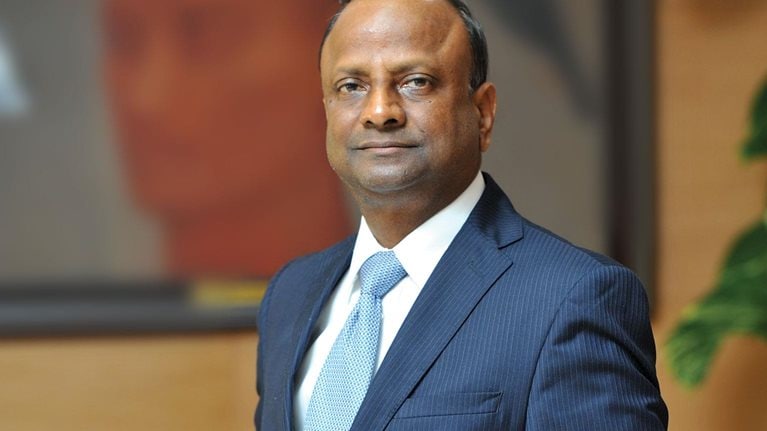Since becoming CEO of Singapore-based DBS, in 2009, Piyush Gupta has taken Southeast Asia’s largest bank on a journey of digitization. It’s a quest that extends beyond consumer-facing digital wallets such as PayLah! that enable clients to access banking services with a simple tap on their smartphones. To support the internal operations of DBS, its infrastructure stack has also been overhauled to harness technologies such as AI, the Internet of Things, and a virtual private cloud. In 2019, Euromoney recognized DBS as the “World’s Best Bank,” and Harvard Business Review ranked it among the decade’s ten most transformative organizations, also honoring Gupta as one of the world’s 100 best-performing CEOs. A staunch believer in the private sector’s capacity to shape society constructively, Gupta also devotes significant time to the UN secretary-general’s Task Force on Digital Financing of Sustainable Development Goals and to Singapore’s Advisory Council on the Ethical Use of AI and Data.
Within Asia, Gupta sees COVID-19 accelerating existing macrotrends, from the digital transformation to public–private partnerships. In June, he explained to McKinsey’s Jason Li and Joydeep Sengupta how DBS’s early embrace of digital technologies helped it shift employee mindsets and overcome the security risks associated with remote work during the pandemic, as well as where he thinks Asia is headed. Gupta also talked about critical new forces, such as supply-chain shifts and the convergence of industries he sees taking shape and why the bank’s deeply held principle of “doing real things for real people” will be even more important in a post-COVID-19 Asia.
The Quarterly: Looking back at COVID-19 a decade from now, do you think we’ll see the pandemic as a speed bump or a true inflection point?
Piyush Gupta: I think it will be an inflection point, partly because it’s going to accelerate some major existing trends. One of those trends is geopolitics. The “China–US bifurcation” is not new and has been happening for the last year. Most people imagined that we’d see an orderly resolution or a pact—maybe both. But COVID has exacerbated those tensions, and I think the chances of this leading to two blocs is real. The impact will be long-lasting.
Second is a shift in supply chains. That’s a trend that has started, but this process might get accelerated with a focus on resiliency. We’ll be seeing more near-shoring and on-shoring. I think you might see fundamental changes in the supply-chain globalization of the last 25 years.
The third major change is an acceleration in digital-consumption demand. There were a lot of people who were resistant. But the long tail has been shifting rapidly, and what’s happened in the last few months would have taken five years if not for COVID-19. And on the flip side of that—the supply side—we’ve seen a large number of workers being able to work digitally and remotely. There’s going to be a significant acceleration in that phenomenon as well. In addition to pure efficiency, it will change the capacity for companies to source talent from multiple locations across geographies.
I think we’re also going to see significant consolidation on the back of COVID. That’s principally because, while there’s a lot of debt floating around right now, there’s going to be the need to recapitalize large numbers of companies over the next year or two. Many countries and sectors don’t have enough equity, and this will give rise to the opportunities to consolidate new global champions, if you will. Additionally, in a post-COVID world, you’ll find industry boundaries collapsing even more. As people look horizontally to find customer value propositions and customer solutions, companies will transcend traditional boundaries that used to define their industries. Marc Andreessen said quite pithily that “software is eating the world.”1 Well, this goes for every industry.
All of these trends suggest to me that when we look back ten years from now, we will see this as a bit of a watershed moment, when things fundamentally did shift.
As people look horizontally to find customer value propositions and customer solutions, companies will transcend traditional boundaries that used to define their industries.
The Quarterly: Let’s explore some of those issues in more detail, starting with supply-chain resilience.
Piyush Gupta: There are some areas that will be driven by government policies and frameworks, especially if you need resilience for strategic industries, like food supply. Medical and healthcare is likely to be another sector where governments might create policy frameworks to encourage companies to site their production facilities or large warehouse capabilities onshore. The second resiliency driver would be companies themselves, which will rethink the trade-off between efficiency and resiliency, to some extent. Today, it’s all about just in time, efficiency maximization. Tomorrow, I think people will start worrying a little more about whether their supply chains are resilient. That said, my view is that people have short- to medium-term memories. What’s likely to happen is that efficiency will still eventually outweigh resiliency because efficiency will mean you can take goods to the market more cheaply and have better profit margins and gain market share.
The Quarterly: What does the digital acceleration you spoke about mean for DBS?
Piyush Gupta: Like many other companies, we leveraged digital technologies to be more relevant to our customers and also to be more convenient, simple, and safe for our staff. We’ve been on this journey for the last several years and have developed an effective and broad-based set of digital capabilities. Our customer volume using these digital tools has gone up 30, 40 percent in some areas and 300, 400 percent in others. But we still have several last-mile gaps. COVID has allowed us to do another two years’ worth of digitization in a short time to create convenience for customers and ongoing business for us.
Similarly, for staff, we’ve actually had plenty of robust capabilities for people to work from home flexibly. The take-up of that was extremely limited, but COVID has helped us get through two important constraints. The first is the psychological constraint, to allow people to feel that it’s OK to work from home. The second is that it has pushed us to rethink our risk appetite. Previously, we were reluctant to let people work off-site because of the cyberrisk and data-privacy risks that are entailed in some kinds of activity. Now, we’ve put in more appropriate controls to make remote work possible.
As a consequence, in some of our markets, as much as 90 percent of our people can work from home. And we have no backlogs: our volumes are running higher than they were before, and everyone is doing at least as much work as they were doing before. Even in the long term, this creates flexibility for our workforce, although I’m not in the camp that believes we will all wind up with no offices, with everybody working remotely. We underestimate what it means to be a human being and the social interactions that we need. But, without a doubt, you’ll see a lot more flexible working, including cross-border remote working. The coronavirus has given us the opportunity to accelerate on both those fronts.
The Quarterly: Are any of the macrotrends you listed cause for concern?
Piyush Gupta: Geopolitics is my biggest worry. The rest of the changes bring opportunity and the capacity to do new things, but the bulk of our business is in Asia, which for several decades now has been the beneficiary of political stability. Our macroeconomies have grown well because there has been no social or political strife and tension. We haven’t had a major war in the region since 1975.
“Pax Americana” has helped balance out the interests of the Chinese. So a world where we have to start choosing sides could be tricky for us. We’re going to have to play it very carefully and tactically on a whole range of different issues. And sometimes, you’ll stub your toes along the way.
There’s also an increasing sense of nationalism, and people are beginning to build borders and boundaries on the back of the pandemic. This could be a big challenge in the short to medium term because it’s important to make sure to keep the boundaries down to allow continued trade flows.
The Quarterly: What are the implications of all this on Asia’s role in the 21st century?
Piyush Gupta: I continue to believe in the notion of the Asian Century. It is undeniable that Asia is shifting from being the factory of the world to being the marketplace of the world. Today, the total GDP of Asia is about a third of global GDP, but if you look at both wealth formation and consumption, Asia continues to outpace most other parts of the world. A part of that is demographics. In parts of Asia, the average age is 27 or 28 years old, while in the US it’s 38. In Europe it’s more than 40. This digitally native population will drive digital transformation and growth in the foreseeable future. And this demographic won’t change. It’s going to be a big source of energy in the system.
Another big positive is that you’ll continue to see a lot of investment in the region. Urbanism is a big part of that. While China has a well-built infrastructure, the rest of Asia will continue to benefit from substantial investments and infrastructure spend toward roads, railways, and highways. It is possible that Asia doesn’t have the savings pool to drive this infrastructure growth, but the opportunity is there. On the back of COVID, I think the long-term trend toward urbanization will be sustained—and, with it, significant flows of capital into the region.
Another major macrotrend is the continued integration of Asia. I don’t think COVID is going to stop that in any meaningful way. Trade flows within Asia continue to be robust even as Asian trade with the US and Europe has slowed in the last two or three years. Even with shifting supply chains, you’re finding Chinese exports into Vietnam, the Philippines, and Thailand increasing. The same can be said for capital flows. In the old days, a large part of savings in rich countries like Japan, China, Korea, and Singapore went to the West and came back from the West in different forms. But in the last decade, the large part of Asian capital is staying within Asia, and you’ll see more Chinese and Japanese capital continue to flow into the region. We may not have a Brussels, but the interconnectedness of Asia is driven by the private sector. Asia grows at night when the governments sleep. Despite a short-term hiccup on the back of COVID, I think Asia can continue to grow at 4 to 5 percent over the next few decades. It will still be the biggest engine, or delta, of global demand.
We may not have a Brussels, but the interconnectedness of Asia is driven by the private sector. Asia grows at night when the governments sleep.
The Quarterly: What does a more economically dynamic and integrated Asia mean for companies based elsewhere in the world?
Piyush Gupta: Irrespective of where you are in the world, your capital-allocation process will be guided by where you find opportunity. Given that there is opportunity in Asia—the markets are here, the infrastructure spend is here—companies will try to maximize that, and many will need to be close to the markets and be close to their customers. This means they’ll actually want to base their manufacturing, processing, and production facilities in the region, so they’re close to their marketplace and customers. I don’t believe you’ll see a situation where Western companies will forsake Asia to deal only with Western markets.
That said, one thing investors need to think through is how to invest in a way that looks like a win–win, both for the supplier of the capital as well as the recipient of the capital. You cannot create a situation where the investor looks like a vulture fund or a bandit, while the people feel like they are being taken advantage of. This will require good government-to-government thinking about creating partnerships across countries. That’s not always going to be smooth and easy in Asia, but I think we’ll get there eventually.
The Quarterly: How about a culture of collaboration and collectivism beyond the organization’s four walls? To what extent is this a differentiator of Asian values?
Piyush Gupta: While the values may not necessarily be different, what makes a difference is the ownership structure of many Asian companies. They tend to be family owned, and family owners tend to think in the long term. Even though institutional investors are supposed to be long-term shareholders, this is actually not true; typical institutions flip over their positions every two months. Therefore, the ideas of purpose, intent, how do you do the right thing for long-term sustainably—they are often easier to find in family-owned companies.
Another significant difference in Asia is the level of collaboration between the public and private sectors for the common good. You see this in Japan in the old days, in Singapore, and in China. For instance, I’m involved with the Emerging Stronger Task Force in Singapore—an aggregation of the public sector and the private sector—which is actively thinking about planning for a post-COVID Singapore. This includes the policy frameworks, regulations, and private-sector agendas that have to come together and be aligned to help the country recover. We’re thinking about every possible aspect: sustainability, supply chains, building and construction, the digital economy. And then we have other existing joint and collaborative efforts that I’m involved in, like the Advisory Council on the Ethical Use of Artificial Intelligence and Data, which are working to figure out the kind of policy frameworks and rules we need in the world of tomorrow. The private sector in many other parts of the world tends to be more regimented around shareholder value.
The Quarterly: How do DBS’s values connect to these forces at work?
Piyush Gupta: Purpose is extremely important to us, and it’s going to be extremely important in the years to come. COVID is going to create a lot of social angst. More people are going to question the role of companies and look for people to blame. Frankly, there’s going to be a lot of anger against rich people, anger about corporate greed. People are going to ask why do companies exist? Thus, the fundamental notion of being very clear about why you exist—the constructive role you play in society, in the community—is going to be extremely important for companies.
Purpose is perhaps the most overriding thing about our nature and culture. We were formed 50 years ago to help in the development of Singapore. If you look at our old reports, for the first decade, nobody worried about whether the bank was making money or not; all people worried about was whether the bank was contributing to Singapore’s development. That’s deeply rooted in our psyche—to do real things for real people. This value continues to be important.
The first cousin of that is the sustainability agenda. People are now recognizing that tail risks can happen, and they have to prepare for them. We’ve realized that we can bear a lot of short-term pain for the collective good and long-term gains. It’s likely that the focus on climate change, biodiversity, sustainability, social consciousness will increase in the days to come.
We also have to focus on a couple of cultures. The first is a culture of collaboration. With more distributed workforces using digital technologies, we’ll have to be more agile, work together, and share chores and tasks to be effective. And then we need an innovation culture, which doesn’t create itself. You have to deliberately drive that and put in the processes and frameworks to encourage innovation, risk taking, and entrepreneurship—it’s about knowing it’s OK to try and fail.
The fundamental notion of being very clear about why you exist—the constructive role you play in society, in the community—is going to be extremely important for companies.
The Quarterly: It seems there are a lot of different voices to keep engaged, even within your own organization. That can’t be easy in a more virtual world.
Piyush Gupta: We’ve launched a monthly “happiness challenge,” where different departments have to demonstrate happiness. My whole management team put together a song. We were terrible, hopeless even, but the song went viral. People loved the idea that we were willing to make fools of ourselves, which in turn created a spirit. We also trained over 1,000 people across the company to code AI—I did it myself—to program virtual sports cars to participate in races. We’re doing all these new activities to engage our people even when they’re working from home.
But the underlying principles of what we’re trying to achieve, which is to keep the company energized and inspire people—that doesn’t really change. Nor does the basic thesis that every individual has the need to save money, to invest money, to move money around, to borrow money to be able to buy a house, a car, or grow a business. That’s fundamentally what banks do. As we go forward, we need to reimagine how we can deliver these basics, from the customer’s perspective. I like to say that we can make the bank invisible: we hide the banking services inside whatever it is that the customer really wants to do with his or her life, so that we can serve the customer at their convenience, in their domain, and on their time.


